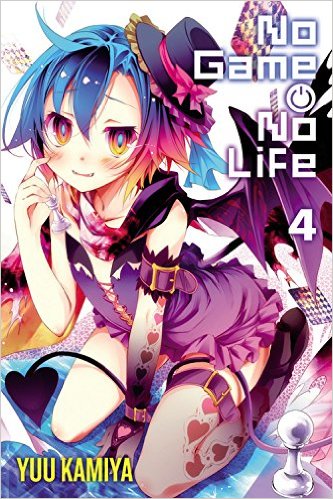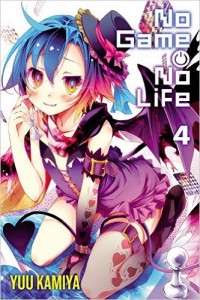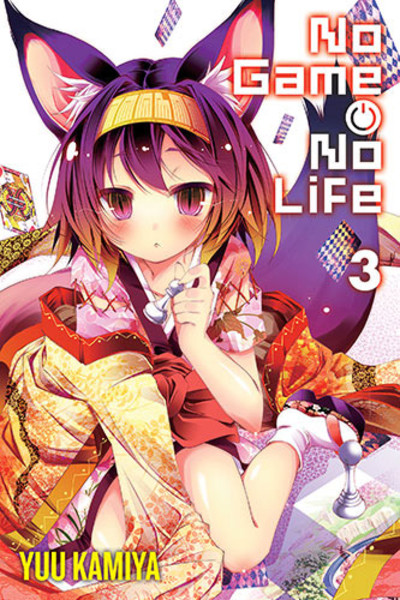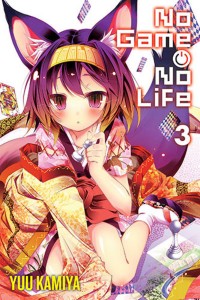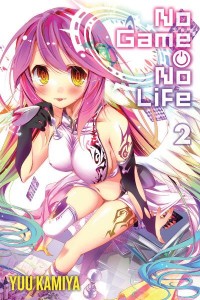By Yuu Kamiya. Released in Japan by Media Factory. Released in North America by Yen On.
It’s always dangerous when a title that you enjoy despite its many glaring flaws has a subpar volume. Suddenly there isn’t enough to enjoy to justify wading through everything. It doesn’t help that this volume was delayed two months for unknown reasons (possibly as the translator got burnt out – it did have a 3-month schedule before this). And it’s unfortunate that this is the first volume that wasn’t adapted into an anime, so will presumably have a lot of new readers trying to see what happens next. But yes, there’s no getting around this – this is just not a great volume of No Game No Life.
Everything seems to be just that little bit tired, starting with Sora and Shiro, who in the first volume were hideously broken people who just happened to be crazy otaku, but here the otaku part is in full swing and were it not for a few casual mentions in the text, you’d never even remember how codependent they are on each other’s presence. This is the first of a two-parter again, so it’s possible the next volume will up the ante, but it also has to be said that nothing really seems to threaten our heroes. Sure, they initially refuse to play the datesim simply because it’s just like that anathema, real-life romance, but once they’re in it, merely avoiding any love points seems to be fine with them. Sora and Shiro have been shown to be invincible, and that’s ALL they are here.
The other characters don’t fare much better. There are the usual NGNL levels of perversion, this time around involving the fantasy vampires and mermaids we see here. The fact that the dhampirs can suck bodily fluids other than blood is (pardon me) milked for all it’s worth, and the Sirens are succubuses whose lack of foresight and intelligence had better be undercut when we reach Volume 5 or I’m going to be pissed off. You don’t right an entire race of bimbos anymore just because it’s fun. And then there’s Ino, the old Werebeast grandpa, whose response in regards to winning the datesim was… memorable, but I’m not sure I get the manly part, and he was also used as a sexual gag regarding all the women he’d bedded over the years.
There is one bright spot in this volume, and that was the first scene with Steph, who has been left behind to deal with the kingdom while Sora and Shiro are negotiating with the Shrine Maiden. Having been forced to play against the two for thousands of games, and losing every single time, Steph has actually become scarily good at games, particularly the card games we saw her failing at in the very first volume. Of course, she’s not aware of this – she’s constantly trying to compare herself to Sora and Shiro, rather than, say, the average citizen. We are also reminded why Sora and Shiro left her there in the firt place – she’s really good at running a country, something they would be terrible at. Sadly, she then goes back to being a figure of mockery for most of the book, but that one brief shining moment was excellent.
It’s possible the next volume will turn this around. As I said, it is a two-parter of sorts. But I must admit that after reading this volume of NGNL I just felt tired.
